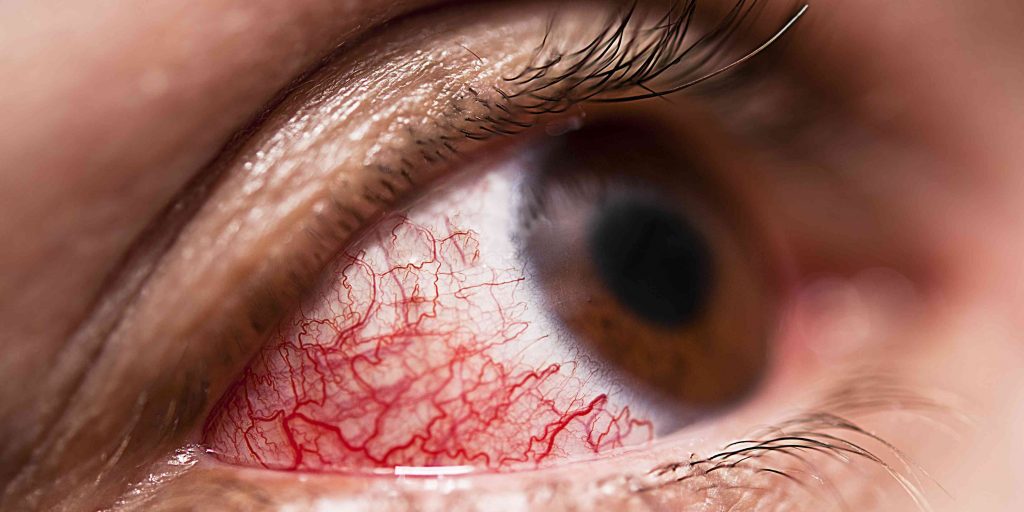Nilüfer Alpay Kanıtez & Murat Hasanreisoğlu
What Is Uveitis?
Uveitis is a general term describing a group of diseases that cause inflammation (inflammation) in the eye tissues and can damage these tissues. These diseases may cause mild visual impairment or severe vision loss.
What are the types of uveitis?
Uveitis is usually classified according to where it occurs in the eye. Anterior uveitis occurs in the front part of the eye. It is the most common form of uveitis, usually seen in young and middle-aged individuals. Most cases occur in otherwise healthy people and may affect only one eye, although some are associated with rheumatologic, skin, gastrointestinal, lung, or infectious diseases. Intermediate uveitis typically affects young adults. The inflammation is mainly located in the vitreous, the clear gel-like tissue in the middle of the eye. It has been linked to several disorders, including sarcoidosis and multiple sclerosis. Posterior uveitis is the least common type. It primarily affects the back of the eye, involving both the retina and the choroid, and is often called choroiditis or chorioretinitis. There are many infectious and noninfectious causes of posterior uveitis. Panuveitis refers to cases where all three main parts of the eye are inflamed. Behçet’s disease is one of the best-known causes of panuveitis and can cause significant retinal damage.
What symptoms does uveitis cause?
Uveitis may affect one or both eyes, and symptoms can develop rapidly. Blurred vision, floaters, eye pain, redness, and light sensitivity (photophobia) are the most common symptoms.
The signs and symptoms of uveitis can vary depending on its type. Anterior uveitis may occur in one or both eyes and can cause eye pain, blurred vision, light sensitivity, an irregularly shaped pupil, and redness in adults. Intermediate uveitis causes blurred vision and floaters and usually does not cause pain. Posterior uveitis often leads to vision loss and may only be detected during an eye examination.
Can uveitis cause permanent vision loss or blindness?
Uveitis can cause permanent vision loss. Therefore, it is crucial to diagnose and treat uveitis as early as possible, ideally before irreversible damage occurs.
What causes uveitis?
In most people, the cause of uveitis is unknown. In some patients, uveitis is associated with certain infections (such as toxoplasmosis) or diseases (such as sarcoidosis and Behçet’s disease). Some people are genetically predisposed to develop uveitis due to genes like HLA-B27 or HLA-A29. However, in many cases, no cause can be identified. Uveitis is classified as an autoimmune disease, meaning the body’s immune system reacts against its own tissues. Since rheumatic diseases are among the most common autoimmune diseases, they are closely related to uveitis.
Uveitis in rheumatic diseases
Uveitis may occur during the course of inflammatory rheumatic diseases and can sometimes be the first sign that leads to diagnosis. When uveitis is detected, it is important to investigate whether it is caused by an inflammatory rheumatic condition. For this reason, many patients are referred to a rheumatologist. A skilled ophthalmologist can clearly define the characteristics of uveitis, which is crucial for differential diagnosis. The severity of uveitis, whether it affects the front or back of the eye, and whether it is granulomatous or not are important clues for identifying the underlying rheumatic disease. Collaboration between ophthalmologists and rheumatologists improves the accuracy and effectiveness of diagnosis, treatment, and follow-up of uveitis related to rheumatic diseases.
The most common rheumatic diseases that can cause uveitis include:
- Ankylosing spondylitis
- Behçet’s disease
- Psoriatic arthritis
- Sarcoidosis
The common symptoms of these rheumatic diseases that can cause uveitis are as follows:
- Back pain: Pain in the lower back, hips, or spine, especially in the morning or after rest, which improves with movement
- Joint pain: Pain in the joints, often in the knees or ankles, possibly accompanied by swelling and stiffness
- Mouth ulcers: Recurrent, painful sores inside the mouth that heal within days or weeks
- Genital ulcers: Recurrent, painful lesions in the genital area that may leave scars
- Skin rashes: Psoriasis-like or eczema-like rashes
- Painful, walnut-sized swellings, usually on the legs
- Fatigue, tiredness, loss of appetite
Depending on the characteristics of uveitis and accompanying symptoms, blood tests, X-rays, and MRI scans may be required. Carrying the HLA-B27 genetic marker is a risk factor for both uveitis and inflammatory rheumatism. In such cases, multiple members of the same family may have inflammatory rheumatic diseases.
After evaluation, if a rheumatic disease causing uveitis is diagnosed, treatment begins. The treatment approach depends on the type and severity of both the rheumatic disease and uveitis. Treating the rheumatic disease also helps in the recovery of uveitis.

